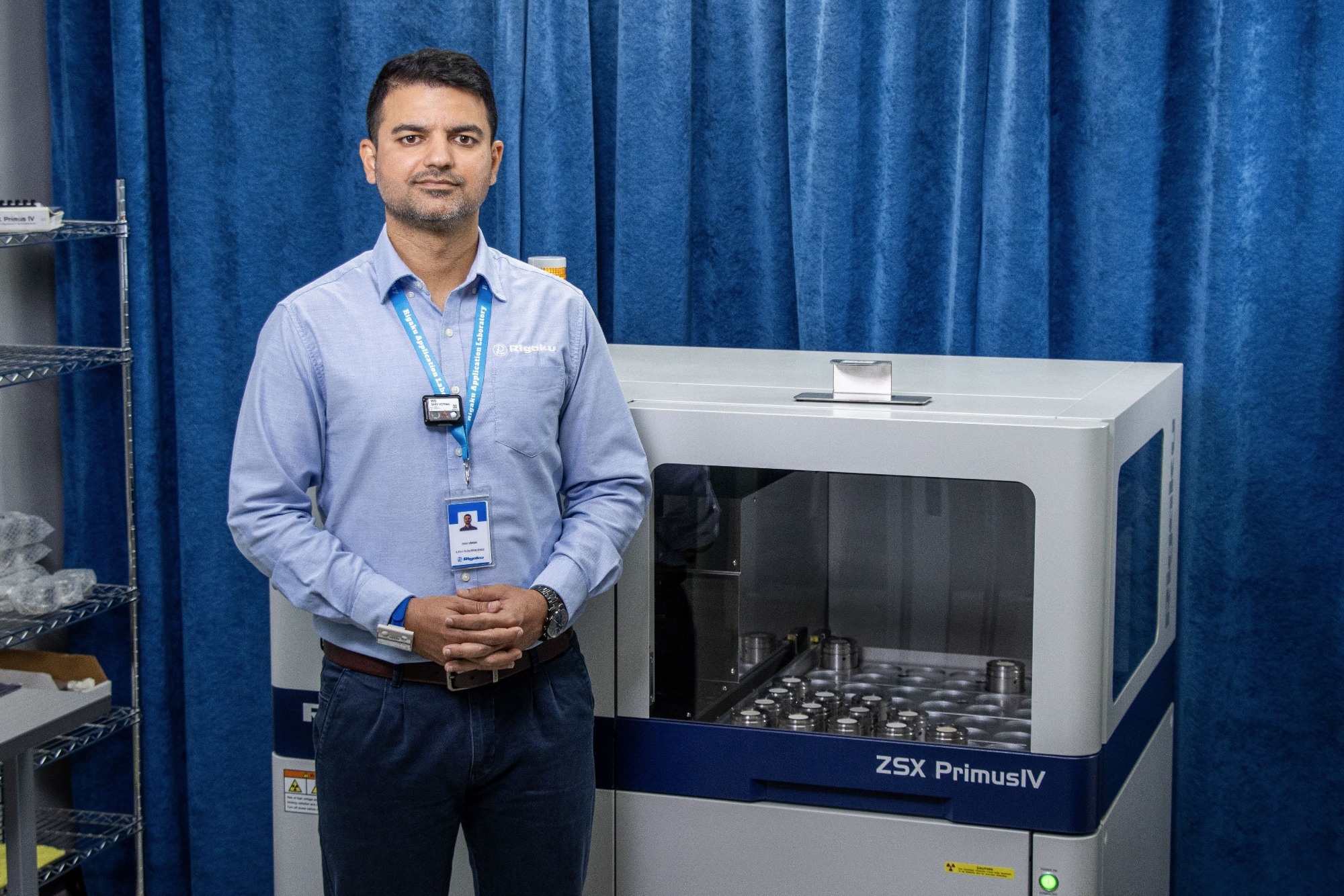Dr. Shiv Verma is an XRF Application Scientist at Rigaku with long-standing expertise in calibration standards and reference materials. Formerly the Technical Director at Micromatter Technologies, he led an ISO/IEC 17025-accredited X-ray facility and certified NIST-traceable standards. He currently supports laboratories worldwide in achieving precise, accurate, and traceable XRF results.
Why do standards make or break XRF accuracy for everyday labs?
Standards are essential in XRF because they convert raw X-ray signals into elemental concentrations. In other words, standards are the bridge between raw X-ray intensities and accurate concentrations. X-ray intensities depend not only on the amount of an element but also on the surrounding matrix, absorption, and enhancement effects.
Without the right standards, results are essentially educated guesses. Using standards that closely match the sample’s composition and physical properties automatically corrects for these factors, eliminating the need to model the complex effects and ensuring reproducible and reliable measurements.
What happens when labs use the wrong standards?
When analyzing real-world materials like soils, ores, or catalysts, a common mistake is calibrating with generic standards, such as pure oxides or metals. Because these generic standards don’t mimic the actual sample matrix, they can introduce bias.
For example, calibrating soil using pure oxide standards ignores the presence of moisture and organic matter, which attenuate X-rays differently and distort the calibration curve. This mismatch can lead to systematic under- or overestimation of element concentrations. Matrix-matched standards, on the other hand, reflect the real environment of the sample and deliver accurate and reproducible results.
Many users struggle with the idea of “matrix effects.” How would you explain them simply?
Matrix effects occur when elements surrounding the analyte alter its X-ray signal, distorting the elemental concentration analysis results. Alteration happens primarily through absorption and secondary excitation (enhancement) of the X-ray signal by the matrix. Absorption reduces signal intensity because other atoms in the matrix absorb part of the analyte’s X-rays before they reach the detector.
For instance, measuring Mg in chocolate is affected by Ca, which absorbs Mg’s low-energy X-rays, underestimating its concentration. However, Mg in an ore is affected by the Ca as well as Al, Si, Fe, and other elements present in the material.
On the other hand, overestimation occurs when fluorescent X-rays emitted by one element excite another element. For example, Fe in steel can excite Cr, increasing the Cr signal and causing overestimation. Understanding these effects allows you to either correct them theoretically or use matrix-matched standards to produce accurate, reproducible results.
For common jobs, where does EDXRF make life easier, and where does WDXRF pay off?
EDXRF and WDXRF both offer distinct advantages depending on the analytical requirements involved. EDXRF is a simultaneous technique that makes life easier in routine applications where speed, simplicity, and flexibility are priorities. It requires minimal setup, is relatively compact, inexpensive, and can even be made portable for field use.
This makes it ideal for screening metals in scrap yards, measuring sulfur in fuels, or performing rapid multi-element analysis in environmental labs where turnaround time is critical.
On the other hand, WDXRF has a larger footprint and tends to be more expensive, but it pays off when high resolution, lower detection limits, and the ability to handle complex or overlapping spectra are demanded. By physically separating wavelengths with analyzing crystals, WDXRF minimizes peak overlaps, reduces background noise, and achieves better detection limit and accuracy for trace and minor elements.
This is especially valuable in industries like cement, mining, and advanced materials research, where regulatory compliance and precise quantification of low-level elements are essential.
How should labs think about XRF versus ICP?
ICP techniques (ICP-OES/MS) are preferred when ultra-low detection limits are required or when analyzing elements that XRF cannot reliably detect. ICP-MS can routinely detect elements like Pb at <0.01 ppb or As at ~0.1 ppb, while XRF detection limits are typically in the ppm range (e.g., Fe ~ 5-10 ppm, Cu ~ 1-5 ppm).
For example, trace Pb or As in drinking water demands ppb-level sensitivity achievable by ICP, not XRF. However, XRF is more suitable for higher-throughput analysis, requiring minimal preparation, being non-destructive, and providing fast, reproducible results without requiring frequent calibration. In many industrial QC settings, XRF balances speed, accuracy, and cost-effectiveness better than ICP.

Image Credit: Rigaku Corporation
What types of XRF standards should labs know about, and when do you use each?
Think in three tiers: SRMs (Standard Reference Materials), CRMs (Certified Reference Materials), and in-house RMs (Reference Materials).
SRMs originate from national metrology institutes, such as NIST, are certified by multiple methods, and carry the lowest uncertainty. They’re expensive, but they prove the lab’s results truly traceable and compliant with ISO requirements. Think of them as the audit-proof benchmark.
CRMs are produced by accredited suppliers; they’re certified, matrix-matched, and much more affordable than SRMs. These are what we rely on for most of our calibration and routine accuracy. If a matrix-matched SRM isn’t available on the market, then a matrix-matched CRM is the best option, because it provides realistic calibration performance for that sample type while still maintaining traceability.
In-house RMs are our daily check samples. They aren’t certified, but they’re stable and consistent. We use them to monitor drift, spot errors early, and keep operations running smoothly between calibrations (Refer to ISO Guide 33, 2015, for more details).
In short, a strategic combination of SRMs, CRMs, and in-house RMs ensures that our XRF measurements are accurate, reliable, and fully traceable, while keeping costs practical and operations efficient.
How do I choose the right standard for my samples?
Match the matrix first, then bracket the concentration range of each analyte. If a regulatory or industry method applies, follow it and its prescribed materials.
When a perfect CRM doesn’t exist, pick the closest matrix, verify with an SRM if possible, and use a check standard to monitor bias. Follow ISO “good practice” principles: certified values, documentation, and proper storage/handling.
If no suitable CRM exists, you can make in-house RMs. The process is straightforward at a high level: collect representative bulk, homogenize (grind/mill), characterize using multiple techniques (e.g., XRF plus ICP), use interlaboratory comparison where possible, assign values statistically, and document or periodically revalidate, aligned with ASTM E2972 guidance.
Alternatively, you can take samples of your actual material and have them assayed by an outside lab using an accredited ASTM or ISO referee techniques.
If readers remember one thing about XRF standards, what should it be?
Without matrix-matched, verified standards, XRF is an estimate. To turn it into reliable, defendable numbers, you need standards. You can start with requirements (what accuracy or traceability you must demonstrate), then focus on match (use SRMs when traceability is needed, CRMs for day-to-day matrix-matched calibration, and in-house RMs only when no suitable CRM exists), and finish with verification (periodic checks and documentation). Get those three right: requirements, match, verification, and you can trust your XRF numbers.
About Dr. Shiv Verma

Dr. Shiv Verma, Ph.D., is currently an XRF Application Scientist at Rigaku, where he applies his expertise in atomic and molecular physics to advance X-ray fluorescence (XRF) methodologies. In his role at Rigaku, Dr. Verma works on bridging instrument technology and end-user applications, optimizing analytical performance, method development, and servicing customers in research and industry. Dr. Verma has also been a member of the Society of Applied Spectroscopy USA as a Certified Senior Spectroscopist since 2021.

This information has been sourced, reviewed, and adapted from materials provided by Rigaku Corporation.
For more information on this source, please visit Rigaku Corporation.
Disclaimer: The views expressed here are those of the interviewee and do not necessarily represent the views of AZoM.com Limited (T/A) AZoNetwork, the owner and operator of this website. This disclaimer forms part of the Terms and Conditions of use of this website.